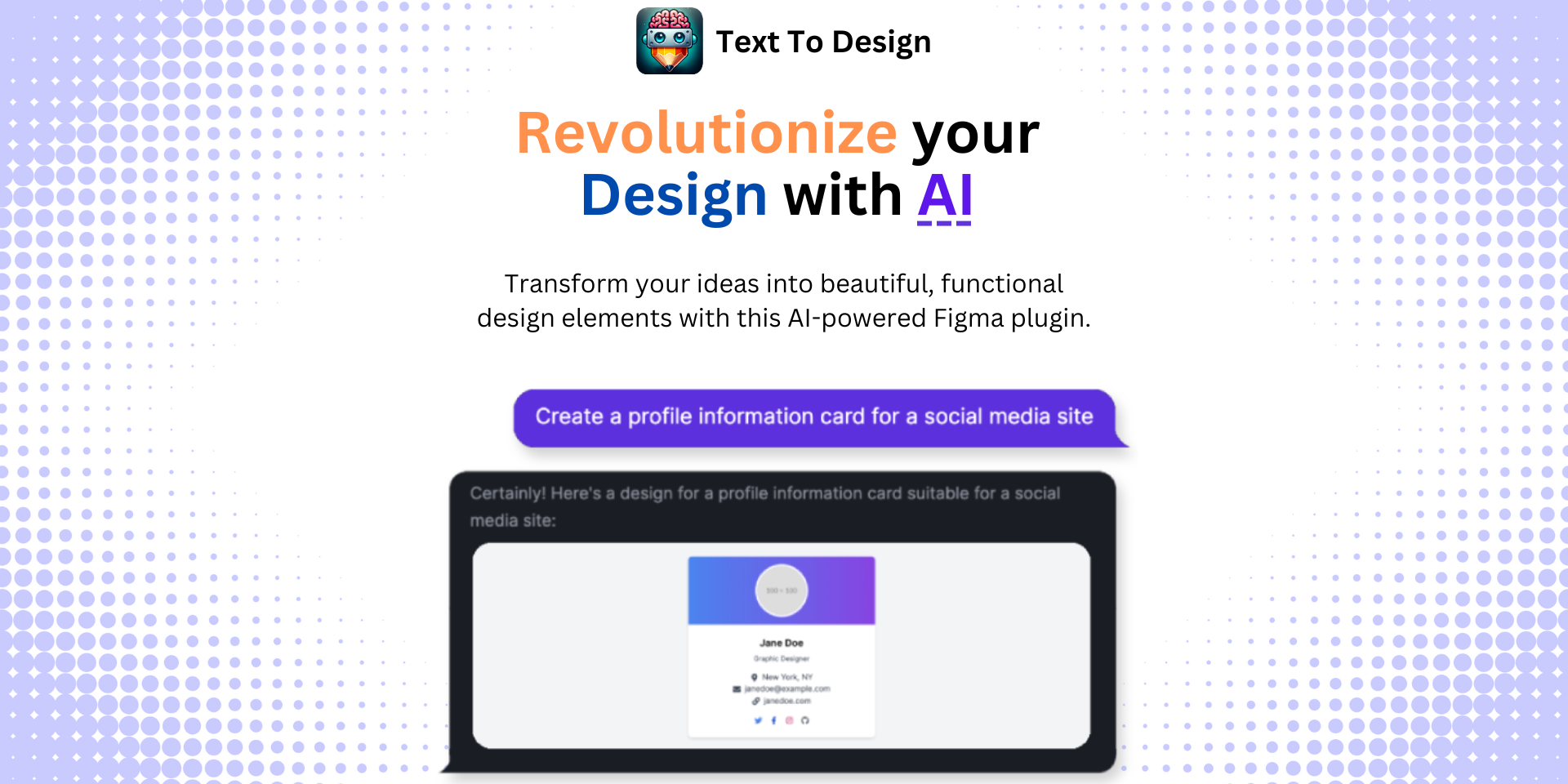Mastering High-Fidelity Mockup Creation in Figma with Text To Design AI
No results found
12/13/2024
Mastering High-Fidelity Mockup Creation in Figma
In the world of digital design, high-fidelity mockups play a crucial role in bridging the gap between concept and reality. They provide a detailed visual representation of a final product, complete with typography, spacing, and color schemes, offering a comprehensive view that communicates design intent clearly to stakeholders and developers. Figma, a collaborative interface design tool, has become a favorite among designers for crafting high-fidelity mockups due to its robust features and ease of use. This blog post delves into the art of creating high-fidelity mockups using Figma, providing insights, tips, and resources to enhance your design workflow.
Understanding High-Fidelity Mockups
High-fidelity mockups are detailed designs that closely resemble the final product. Unlike low-fidelity wireframes, which focus on layout and structure, high-fidelity mockups include detailed visuals such as images, colors, and typography to give a realistic picture of the final product. These mockups are essential for:
- Communicating Design Intent: They provide a clear visual reference that can be easily understood by non-designers and stakeholders.
- Easing Development: Developers can reference high-fidelity mockups to understand the exact specifications of the design, reducing ambiguity.
- User Testing: They allow for accurate user testing as they closely mimic the final product.
Getting Started with Figma
Figma simplifies high-fidelity mockup creation with its intuitive interface and powerful tools:
- Design Systems: Use Figma's design systems to maintain consistency across your designs. Design systems allow you to reuse components, ensuring that your mockups are aligned with the project's style guide. Learn more about Design Systems
- Grid and Alignment Tools: Ensure precision in your designs with Figma’s grid and alignment tools. Proper alignment enhances the visual appeal and usability of your product.
- Components: Create reusable components for elements like buttons, forms, and navigation bars to save time and maintain consistency.
Tips for Creating High-Fidelity Mockups
1. Utilize Components and Styles
Creating components in Figma allows you to design once and reuse across your project. This not only saves time but ensures that any updates to a component are reflected across all instances. Similarly, using styles for text, colors, and effects keeps your mockup consistent.
2. Focus on Spacing and Alignment
Accurate spacing and alignment are crucial in high-fidelity mockups. Use Figma’s grid and layout tools to ensure elements are perfectly aligned and spaced. This precision is vital for creating a professional and polished design.
3. Add Interactions
Figma allows you to add interactive elements to your mockup, transforming it into a functional prototype. This can be particularly useful for presenting your designs to stakeholders, as it provides a more immersive experience.
4. Gather Feedback
Use Figma’s collaboration features to gather feedback from team members and stakeholders. Collaborative tools like comments and sharing options facilitate direct feedback and improve the design process.
Integrating Advanced Prototyping Tools
While Figma is powerful on its own, integrating with other tools can enhance your prototyping capabilities:
- Framer: For advanced interaction design, Framer can be used alongside Figma. It allows you to create complex animations and interactions that may not be possible within Figma alone. Explore Framer
- ProtoPie: This tool is excellent for adding high-level interactions to your prototypes. It offers features that allow you to simulate complex user interactions and micro-interactions. Discover ProtoPie
Call to Action: Elevate Your Designs with Text To Design AI Assistant
Enhance your Figma design workflow with the Text To Design AI Assistant. This advanced plugin transforms your text descriptions into innovative design ideas, making it an indispensable tool for designers, developers, and creative teams.

Explore the potential of AI in design and automate repetitive tasks to focus on creativity and innovation. Visit Text To Design AI to learn more about how our Figma plugin can revolutionize your design process.
Conclusion
High-fidelity mockups are a critical component of the design process, offering a detailed and realistic view of the final product. By leveraging Figma's powerful tools and integrating with advanced prototyping solutions, designers can create stunning, functional mockups that communicate effectively and enhance the development process. Whether you're a seasoned designer or just starting, mastering high-fidelity mockup creation in Figma is an essential skill that will elevate your design projects to new heights.
For more insights and resources on Figma and design methodologies, check out our blog and stay updated with the latest trends and tools in the design industry.
Step Into the Future of Design with your AI Copilot
Join +40K designers revolutionizing their workflow with AI. Install our Text-to-Design plugin in just a few clicks to unlock your creative potential. Start for free and instantly generate designs for your project.